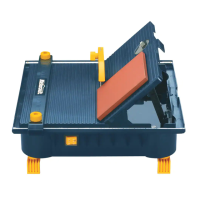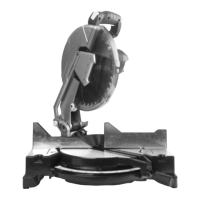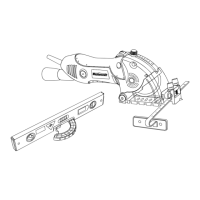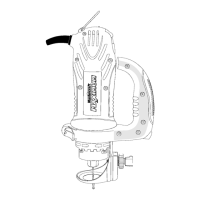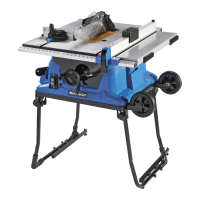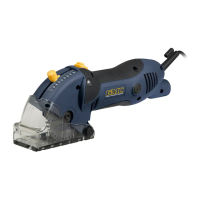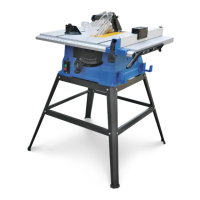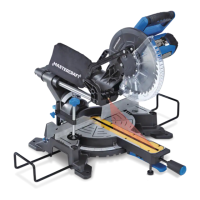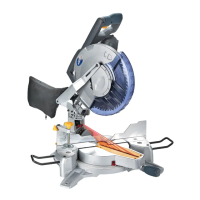DADO CUTTING (Fig. 38)
1. Unplug the power cord before removing
and/or installing dado blades.
2. When making dado cuts, a dado insert plate
must be installed in place of the regular table
insert.
3. The arbor (1) of this saw restricts the
maximum width of dado cut to W'
(Fig. 38). The flange (2) must be installed
prior to reinstalling and tightening arbor
nut (3).
4. NOTE: Make sure the arbor nut is tight and
Fig. 38
i
II
II
I I
i I'l I
jJ
_J
J
2
3
.
at least one thread of the arbor sticks out past the nut.
Use only a stackabte dado set and keep the width to W' or tess. It will be necessary to
remove the blade guard and splitter when using the dado.
CAUTION! Use caution when the dado blade is running. You have no guard to protect
you. Also, adjustable or wobble dado blades can NOT be used on this machine.
6. Use the correct number of round outside blades and chippers as shown in the dado
blade's instruction manual. Blade and chipper total width must not exceed W'.
7. Before starting the table saw, check to make sure the installed dado assembly will not
strike the motor, table or table saw base when in operation.
CAUTION! To avoid injury, always replace the blade, blade guard assembly and table
insert when you are finished with the dado operation.
USING A WOOD FACING ON THE RIP
FENCE (Fig. 39)
When performing some special cutting
operations, add a wood facing (1) to either side
of the rip fence (2).
1. Use a smooth 3_,,thick board (1) that is as
long as the rip fence.
2. Attach the wood facing to the rip fence
using wood screws (3). A wood facing
should be used when ripping material such
as thin panelling to prevent the material
from catching between the bottom of the
fence and the table.
Fig. 39

